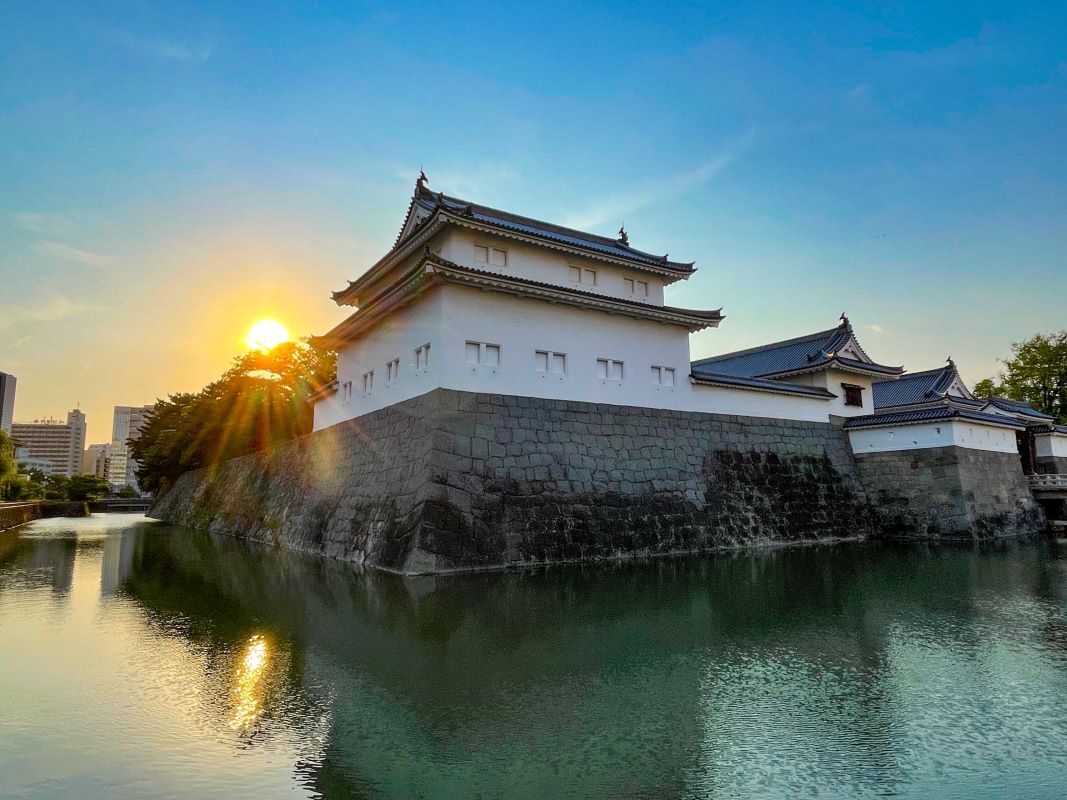B.C.6-B.C.5 some people inhabited the region blessed with a warm climate. B.C.3 they came to know to utilize not only stone-made tools but metal-made ones and began to settle someplace where they could produce rice as their main food. “Toro Ruine” now reveals to you their dwellings, rice fields, tools, and granaries of an ancient society some 1800 years ago.
Toro Ruins in Shizuoka CityBirth of Sumpu Local Government
Shizuoka Sengen ShrineA.D.8 Kokubunji temples, praying for peace and keeping off disasters from the country of Japan, were established all over Japan. The culture and economy of the country made progress successfully. Eventually this tendency to progress influenced on the region of Sumpu (now the Shizuoka region) which used to be an eastern country of Japan. This is the foundation of the modern city of Shizuoka.
During the period of the Tempu Emperor, the local government sit in Ihara (now Shimizu city) and moved to Shizuoka (now Shizuoka city), which became the center of the policy and culture in the region of Shizuoka since then.
Sumpu of Imagawa Dynasty

Norikuni Imagawa was rewarded the lord of Sumpu in the year 1338, on the account of distinguishing himself in a lot of battles as a warrior of Takauji Ashikaga, the leading lord of Japan at that period. Since 1338, the region of Shizuoka was named ” Fuchu ” or ” Sumpu ” During the Imagawa dynasty ten-generation, for over 230 years, Shizuoka as the castle town was well organized and flourished the commerce, enjoying the name of ” Eastern Kyoto “. Yoshimoto, the ninth lord of Imagawa, dominated the eastern region by forming alliances with lord Takeda and Lord of Hojo.
Ieyasu Tokugawa and Sumpu
IieyasuIeyasu Tokugawa, winning the victory at Sekigahara plain battle, formed the central government in Edo (Tokyo), in the year 1603. His son Hidetada succeeded to the title Shogun in the year 1605. For 9 years, 1607-1619, Ieyasu lived in Sumpu, and made many endeavors in the flood prevention works, and founded “96 towns of Sumpu.”
From The Name of Sumpu to The Name of Shizuoka
The region of Shizuoka used to have two names, ” Sumpu ” and ” Fuchu “. The name ” Fuchu” implies ” disloyalty “, so after the fall of the Tokugawa dynasty, ” Sumpu ” and ” Fuchu ” were changed into ” Shizuoka ” named after Shizuhata Yama mountain which is in the region of Shizuoka.
Starting as a Member of Modern Society
Summer Fuji from Miho no MatsubaraThe first gaslamp illuminated Shizuoka in the year of 1873. A wooden bridge over the Abe River was constructed by Sogo Miyazaki in the year 1874. Utsugaya Tunnel was opened in the year of 1876. Opening the Tokaido Honsen railroad in 1889 contributed to completing the transportation within the region of Shizuoka.
Politically, enforcement of the city organization of Shizuoka on the first of April in 1889, along with other 31 cities all through Japan, started as a small city with a population of 37681 and 436 square km wide.
In the year of 1969, Shizuoka city became the second largest city in Japan, combining six villages in Abe county. As Shizuoka city developed tea plantations, it was admitted as the major producer of tea in Japan.
Mt Fuji From Shizuoka CityShimizu port played a big role to promote tea production as a tea export port. Shizuoka city is now the capital of Shizuoka prefecture and also the core city of policy, economy, culture, and intelligence in the middle bloc of Japan. In order to realize the future city, Shizuoka is now taking effective measures to accomplish the high-intelligent and sophisticated cultural city.



